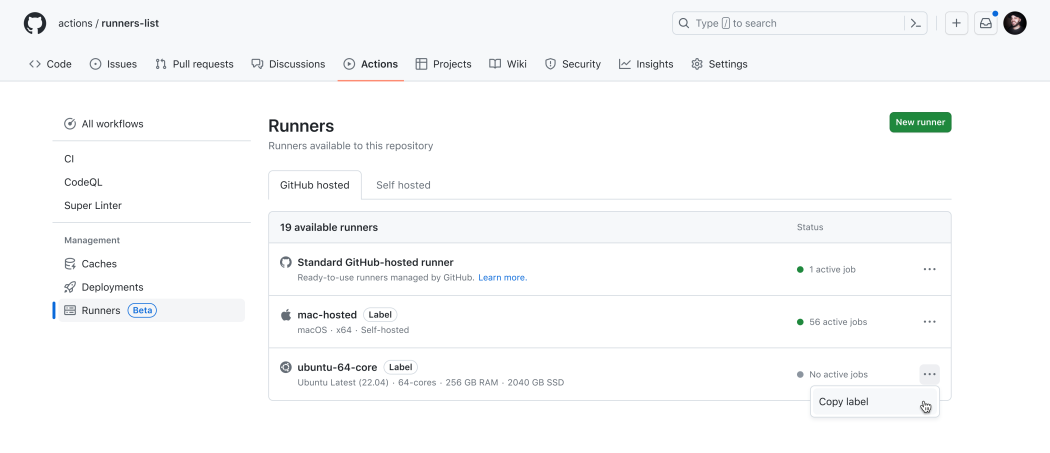Ubuntu 24 for GitHub-hosted runners is now GA
The Ubuntu 24.04 image for Actions is now generally available. To use Ubuntu 24 directly on your GitHub-hosted runners update runs-on: in your workflow file to ubuntu-24.04.
jobs:
build:
runs-on: ubuntu-24.04
steps:
- uses: actions/checkout@v4
- uses: actions/setup-dotnet@v4
- name: Build
run: dotnet build
- name: Run tests
run: dotnet test
The Ubuntu 24.04 runner image has different tools and tool versions than Ubuntu 22.04.
ubuntu-latest migration
The ubuntu-latest label will migrate to Ubuntu 24 over the course of the next month, beginning September 23rd and finishing on October 30th. During migration, you can determine if your job has migrated by viewing the “Runner Image” information in the “Set up job” step of your Actions logs.
macOS 15 for GitHub-hosted runners in Public Beta
The macOS 15 image for Actions is now available in public beta. To use macOS 15 directly, update runs-on: in your workflow file to macos-15, macos-15-xlarge, or macos-15-large.
jobs:
build:
runs-on: macos-15
steps:
- uses: actions/checkout@v4
- name: Build
run: swift build
- name: Run tests
run: swift test
The macOS 15 runner image has different tools and tool versions than macOS 14.
To view the list of installed software for each image, or report issues, head to the runner-images repository.





